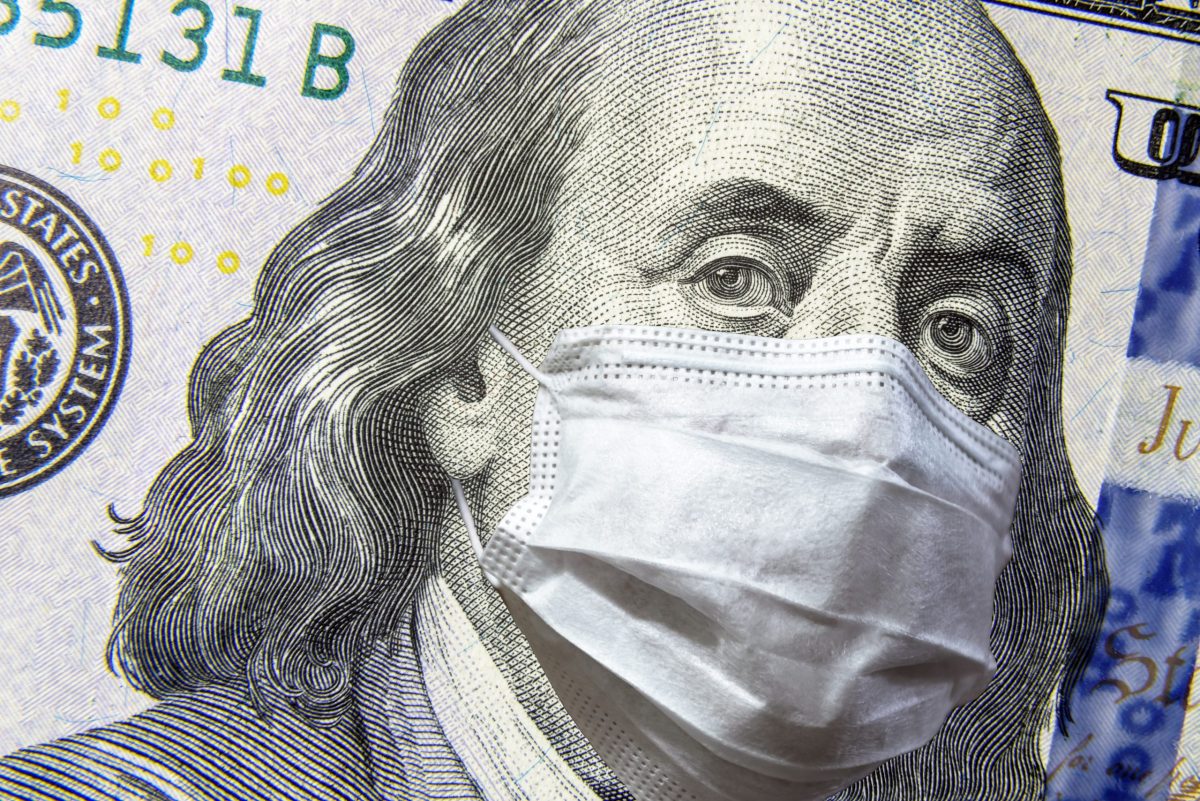
More Tenth-Anniversary FPLG Blog Favorites
10.24.2024 | Linda J. Rosenthal, JD

That mountain of money Congress authorized back in March as “fiscal relief funding” for state, local, territorial, and tribal governments?
Since early May, the Treasury Department has been shoveling it out the door as fast as it can, but a big chunk of that “whopping $350 billion” remains.
And “money doesn’t just spend itself….”
It needs our (continuing) help, the National Council of Nonprofits has just announced, to land – as expressly authorized – in appropriately significant amounts in the nonprofit sector.
Among the brightest aspects in a sea of bleakness over the past 18 months of the pandemic has been the almost shocking willingness of Congress to step up repeatedly with federal financial assistance. It began right away with the CARES Act, topped off with additional funds soon after. There was new legislation in December 2020 with more money.
Then in mid-March 2021, in the American Rescue Plan Act (ARPA), the federal government authorized another staggering tranche of desperately needed aid.
The Treasury Department followed up by announcing the launch of a major part of the ARPA; that is, a $350-billion COVID-19 fund “to help turn the tide on the pandemic, address its economic fallout, and lay the foundation for a strong and equitable recovery.”
It was for state, local, tribal nation, and territorial governments. The amounts divvied up include at least $1.2 billion for the smallest states up to $42.9 billion for California, the largest one. In addition, the counties and municipalities are not pitted in battle against each other or their states for these funds; tens of millions of dollars more are set aside directly for local government units.
A few months ago, we reported on this financial-assistance windfall and the efforts to direct the money in the most productive manner. See Billions In Covid-19 Aid: Nonprofits Should Engage ASAP (August 3, 2021). Most particularly, our discussions focused on the critical fact that within that deluge of government money comes desperately needed help for the nonprofit sector.
“Specifically, governments may use the federal funds directly or through others, meaning that individual charitable nonprofits can be the recipient of assistance as well as the provider of assistance to others.” See the Treasury Department’s publication: Coronavirus State and Local Fiscal Recovery Funds, the Fact Sheet (May 10, 2021), the Interim Final Rule (May 17, 2021), and the Frequently Asked Questions, (updated July 19,2021).
In addition, many states have authorized significant relief funds from their own coffers that can be used by 501(c)(3)s. See our follow-up post two weeks later: Suddenly, It’s Raining Grant Money (August 17, 2021).
In our August 3rd post, we told you how The National Council of Nonprofits (NCN) got out in front of this issue right away, issuing an important 20-page PDF (downloadable) report in June 2021 titled Strengthening State and Local Economies in Partnership with Nonprofits. There, NCN urges our “government partners” to allocate these funds most productively in accordance with our sector’s priorities and wish lists.
“Building on the shared experiences and expertise of nonprofits across our networks,” the NCN authors explain, “we compiled information about dozens of programs from across the country where nonprofits are working together with state and local governments to deploy” previously authorized federal aid.
In that June 2021 Special Report, NCN emphasizes the “natural” partnership between “charitable nonprofits and governments, serving the same constituents in the same communities.” The nonprofit sector is “perfectly positioned to maximize public benefits” because of its “deep knowledge of community needs, reach, and existing relationships, particularly in low-income and underserved or hard-to-reach populations.”
At the end of the June 2021 document, the National Council of Nonprofits includes a critical call to action to the nonprofit community: “We encourage you to use the report by sharing it with local government officials and replicating one or more of the programs in your community…,” adding: “A reasonable early question a public official may ask is whether governments are authorized to use these funds to support charitable nonprofits and their work in communities. The answer from Congress and the Treasury Department is yes.”
This program is going very well according to the results of interim reports to the U.S. Treasury that came in by August 31st.
And the National Council of Nonprofits has just issued an updated and expanded version of its earlier report. The superseding title is Strengthening State and Local Economies in Partnership with Nonprofits: Principles, Recommendations, and Models for Investing Coronavirus State and Local Fiscal Recovery Funds [Updated October 2021].
In a special edition of its Nonprofit Advocacy Now newsletter (10/12/21) – see Turning Nonprofit Partnerships with Governments into ARPA Fund Investments – the National Council of Nonprofits touts the success of our community’s efforts so far and asks for continuing engagement.
“Six months after its enactment,” the organization proudly explains, “the American Rescue Plan Act is growing in significance for charitable nonprofits as governments at all levels have begun partnering with charitable organizations to put these once-in-a-generation resources to use in ways that address longstanding challenges and improve conditions in communities.”
With dozens of additional examples in the now-25-page version of the Report, NCN emphasizes in particular how government officials around the United States are “applying the guiding principles and recommendations articulated by and for nonprofits in the previous edition of the report.”
This updated version “provides a roadmap for lawmakers at every step of the funding continuum to see proven avenues for wise funding decisions.”
The National Council of Nonprofits concludes its most recent delivery of information by delicately urging “… nonprofits to take to heart the materials in the report and use it to advance their missions, relationships, and impact.” If that’s just a bit too subtle, take inspiration from the fawning Rodeo Drive boutique manager and his Cheshire Cat grin in the iconic “Pretty Woman Suck Up Scene.” (Just google it.)
Assure our “government partners” that, as always, we’re here to help them spend all of that money.
— Linda J. Rosenthal, J.D., FPLG Information & Research Director
